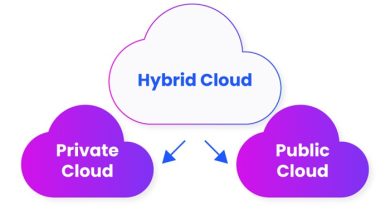
In the rapidly evolving world of fintech, mobile banking apps have emerged as the cornerstone of customer engagement and financial transactions. With millions of users relying on smartphones for everyday banking activities, the development of mobile banking apps has become an essential focus for financial institutions. From enhanced security features to seamless user interfaces, mobile banking apps are constantly adapting to meet the needs of both consumers and banks.
This article delves into the key elements of mobile banking app development, the emerging trends shaping the industry, and the best practices for building secure, user-friendly apps that cater to the needs of modern consumers.
Why Mobile Banking Apps Matter
The Growing Need for Mobile Banking
The demand for mobile banking solutions has skyrocketed in recent years. According to a report by Statista, the global number of mobile banking app users reached over 1.8 billion in 2023, a number that continues to grow. Customers now expect 24/7 access to their accounts, the ability to perform transactions, and access financial services from the palm of their hand.
Banks and financial institutions are responding to this demand by developing robust mobile banking apps that provide a wide range of services, including:
- Account management: Check balances, view transaction history, and manage payments.
- Fund transfers: Send money locally or internationally, pay bills, and even schedule future payments.
- Credit and loan applications: Apply for personal loans, mortgages, and credit cards directly from the app.
- Investment management: Monitor investments, trade stocks, or get financial advice.
- Security features: Enable biometrics, two-factor authentication (2FA), and other security measures to ensure user safety.
Key Features of a Successful Mobile Banking App
When developing a mobile banking app, there are several essential features that must be included to ensure its success in the highly competitive market.
1. User-Friendly Interface
The user interface (UI) is one of the most critical elements in mobile banking app development. With customers expecting intuitive and seamless experiences, a clean and well-organized interface is key to keeping users engaged.
A well-designed mobile banking app will feature:
- Easy navigation: Clear menus, easy-to-understand icons, and simple paths to complete tasks.
- Personalized dashboards: Customize account summaries, transaction history, and upcoming bills to fit the needs of individual users.
- Interactive features: Allow users to access various services such as budgeting tools, spending analysis, and notifications of important updates.
2. Robust Security Measures
Security is a top priority for any mobile banking app. Given the sensitive nature of financial data, any breach can have devastating consequences. Banks and fintech companies must ensure that their apps meet the highest security standards.
Key security features to implement include:
- Multi-Factor Authentication (MFA): Adds an extra layer of security by requiring more than just a password to access an account.
- Biometric Verification:Use facial recognition, fingerprint scans, or voice recognition for quick and secure access (e.g. via passkeys).
- Data Encryption: Encrypt data both in transit and at rest to protect sensitive information from hackers.
- Session Expiration: Automatically log users out after a period of inactivity to prevent unauthorized access.
3. Fast and Reliable Payments
One of the main reasons people use mobile banking apps is to make quick and reliable payments. Whether it’s sending money to a friend, paying a bill, or purchasing a product, the process should be as quick and seamless as possible.
The key to this is integrating payment gateways like Stripe, PayPal, or Apple Pay, which ensure fast and secure transactions.
4. Integration with Third-Party Services
Modern banking isn’t just about managing your own accounts. Mobile banking apps can integrate with third-party services to provide additional functionalities, such as:
- Personal finance management tools: Integrate with tools like Mint or YNAB (You Need a Budget) to provide users with budgeting, spending analysis, and financial planning capabilities.
- Investment platforms: Partner with robo-advisors and trading platforms like Robinhood or E*TRADE to give users access to investment opportunities directly within the app.
- Bill payment services: Allow users to pay their utilities, credit card bills, and loans directly through the app by integrating with services like Plastiq or Bill.com.
5. Push Notifications and Alerts
Mobile banking apps should provide real-time updates to keep users informed about their finances. Push notifications can alert users to:
- Low balance alerts: Inform users when their account balance falls below a specified threshold.
- Transaction confirmations: Notify users of successful transactions or changes to their accounts.
- Security alerts: Warn users of suspicious activity or potential fraud.
6. Customer Support Features
Incorporating features like live chat, FAQs, and support ticket systems can significantly enhance the customer experience. Users should be able to get help quickly if they have an issue with their account or a specific transaction. The more accessible and responsive the support system, the more likely users will trust the app.
Mobile Banking App Development Process
1. Market Research and Planning
Before starting the development process, it’s crucial to conduct thorough market research. Understand your target audience’s needs, behaviors, and pain points. Additionally, analyze the competition to identify gaps in the market that your app can fill.
Key steps in this phase:
- Identify the target demographic: Age, location, income level, and financial habits.
- Define your app’s unique selling proposition (USP): What makes your app stand out from competitors?
- Choose a tech stack: Decide on the programming languages, platforms (iOS, Android, or both), and frameworks to use for development.
2. UI/UX Design
The user interface (UI) and user experience (UX) are foundational to the success of the app. Work closely with design experts to ensure that the app is easy to navigate, visually appealing, and aligns with your brand’s identity.
Key aspects to focus on:
- Wireframes: Sketch initial designs and layout of the app.
- Prototypes: Create interactive models of the app to test with users and gather feedback.
- Usability testing: Ensure that the app is easy to use and navigate by conducting user testing during the design phase.
3. Development and Testing
This is the stage where the actual coding happens. Depending on the tech stack, the development team will start building the app for both frontend (user-facing side) and backend (server-side functions).
- Backend development: Integrating the payment systems, security protocols, user data storage, and third-party service integrations.
- Frontend development: Developing the mobile interface and ensuring that it runs smoothly across different devices and screen sizes.
Testing is critical to ensure that the app is free of bugs and performs well under heavy usage. Conduct various types of testing:
- Functional testing: Ensure all features work as expected.
- Performance testing: Test the app’s speed, responsiveness, and reliability under stress.
- Security testing: Assess the app for vulnerabilities and ensure it meets industry security standards.
- Usability testing: Ensure the app is user-friendly and intuitive.
4. Launch and Maintenance
Once testing is complete, you can launch the app on the App Store or Google Play Store. However, the development process doesn’t stop at launch. Continuous updates and maintenance are essential to fix bugs, improve performance, and add new features.
Key post-launch activities:
- Monitor app performance: Track app performance and user feedback.
- Provide regular updates: Continuously improve the app based on user feedback and market trends.
- Marketing and user acquisition: Promote the app through digital marketing campaigns, referral programs, and partnerships.
Emerging Trends in Mobile Banking App Development
As technology continues to evolve, mobile banking apps are increasingly adopting the following trends:
1. AI and Machine Learning
AI and machine learning are revolutionizing mobile banking apps by enhancing personalization and improving security. AI can analyze user behavior to offer tailored financial advice, while machine learning algorithms can detect unusual transactions and prevent fraud.
2. Blockchain Integration
Blockchain technology has the potential to transform mobile banking by enabling faster and more secure transactions. Banks can integrate blockchain for secure transactions, reducing the risk of fraud and improving transparency.
3. Voice Banking
With the rise of voice assistants like Amazon’s Alexa and Google Assistant, voice banking is becoming a popular feature in mobile apps. Users can check balances, make payments, and transfer funds using voice commands.
4. Digital Wallets
Digital wallets like Apple Pay, Google Pay, and Samsung Pay are becoming mainstream in mobile banking apps. These services allow users to store their credit card information securely and make payments with just a tap of their phone.
Conclusion
The future of mobile banking is bright, and the development of mobile banking apps is key to offering customers the convenience and security they demand. By incorporating essential features like a user-friendly interface, robust security, fast payment options, and third-party integrations, banks can ensure their apps remain competitive and customer-centric.
Staying up-to-date with emerging trends, such as AI, blockchain, and voice banking, will help financial institutions stay ahead of the curve and continue to innovate in this dynamic industry. If you are looking to build a mobile banking app in 2025, focus on providing seamless experiences, top-notch security, and cutting-edge technology to meet the ever-evolving needs of your users.




